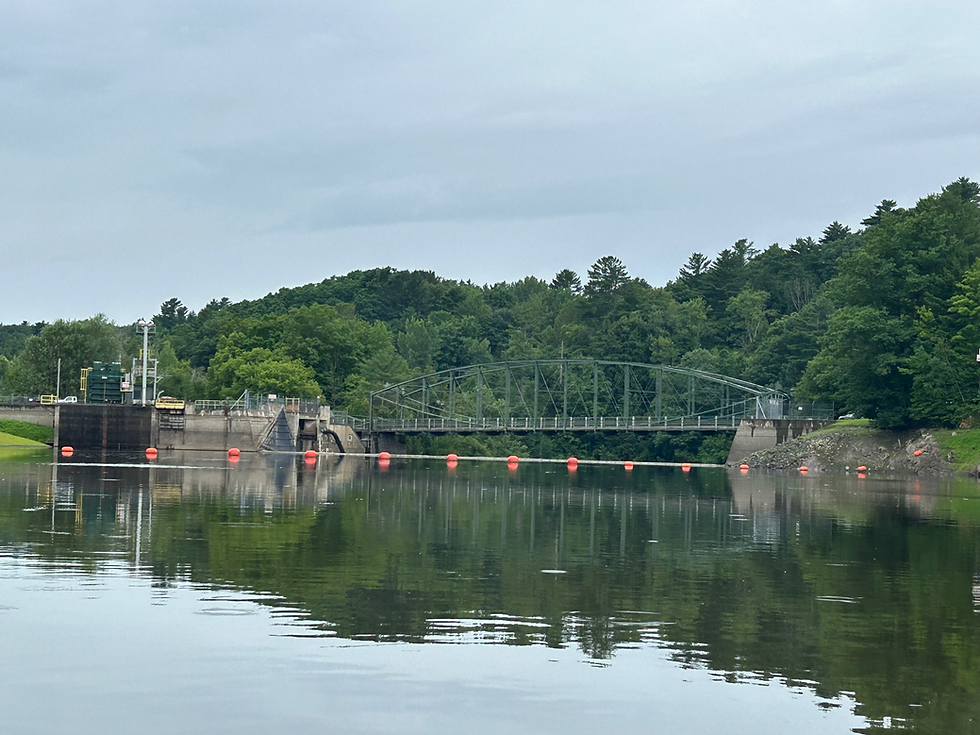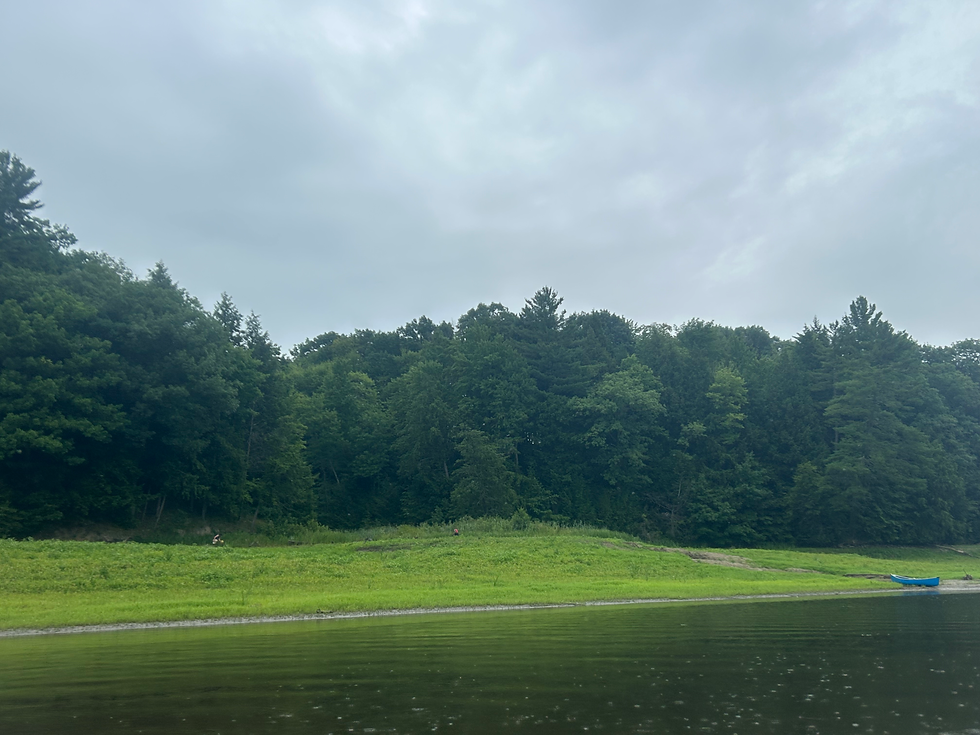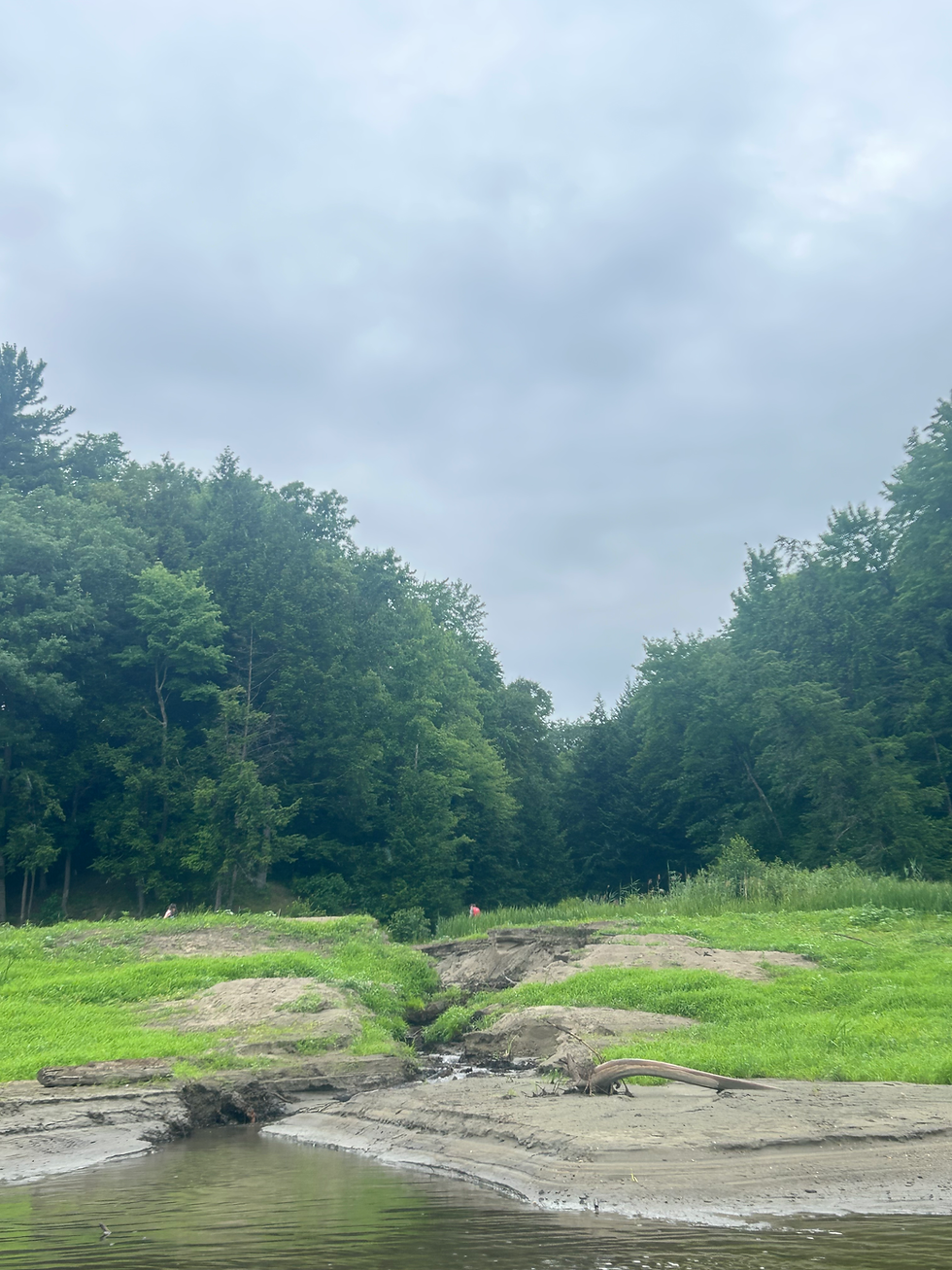Pearl Finds Out What Happens When a Dam Stops Working
- Ruby B
- Aug 4
- 3 min read
On June 16th, 2025, the Highgate Dam experienced a 12-15 foot tear in its rubber blade. This caused the dam to stop production immediately. The Highgate Dam is located on Mill Hill Road in the town of Highgate but is operated by the Village of Swanton. The dam is currently deflated and it is unclear when repairs will occur.
The Highgate Dam has been around since the early 1900's, providing electricity for the towns of Highgate and Swanton. Prior to that, Highgate Falls has been used to generate electricity from The Missisquoi River since 1797. There have been many changes and upgrades to the dam over the course of its history.

Now that the Highgate Dam has broken it begs the question, what happens when a dam stops working? This can be explored in two ways, one from an anthropomorphic lens and another through an environmental lens.
Anthropomorphically, this dam is used to create energy that is supplied to homes and businesses in Swanton. Although the dam has experienced a tear in its rubber blade, it can still produce electricity. However, there is a reduction in its max capacity. This could cause an increase in electricity bills for customers as well as potential costs for fixing the dam, both short and long term as the village is exploring multiple options for repair.

Environmentally, dams have many negative effects. They change the flow of the river, and disrupt aquatic habitats. Fish that depend on clean, flowing water for their food supply and reproduction have population declines in areas where dams are present. Dams decrease river quality by causing stagnation, increasing water temperatures and decreasing the amount of oxygen present in the water, this can cause large amounts of methane to be released into the environment. Food supply and local recreation are impacted by this lowered water quality.
There is a long history of hydroelectric dams on The Missisquoi River. While most are no longer present some such as Highgate Dam and Enosburgh Dam are still producing energy. There are several on going efforts to remove dams that are no longer in operation along The Missisquoi River. Missisquoi River Basin Association is working to remove Sleeper Pond Dam in Newport and Franklin County Natural Resources Conservation District will be removing Trout Brook Reservoir Dam in Enosburg Falls this summer. Removing dams is one of the greatest ways to increase river health. When these dams are taken out, they will allow for safe and easy fish passage, river recreation, and naturally flowing cool and clean water.
On July 20th, 2025 MRBA held a river clean up on a section of The Missisquoi River in Highgate where staff, board members, and volunteers got to see first hand how nature is recuperating without a dam present.

In just one month, the landscape has changed drastically. The water level on the river is 3-5 feet lower than if the dam was operational. This consistently lower water level is allowing
for new river banks to form. On these new banks grass is growing, wetlands are naturally restoring, and sediment layer are exposed. Docks were seen several feet from the waterline and muscles could be found tucked away in the river bank.
It is extremely moving to see nature come in and flourish in this rapidly changing landscape.
Pearl encourages you to take a trip out to the Highgate Dam and see these changes first hand. It will make you feel connected to our environment. Pearl is looking forward to going back to the dam to see how nature continues to reclaim this area.











